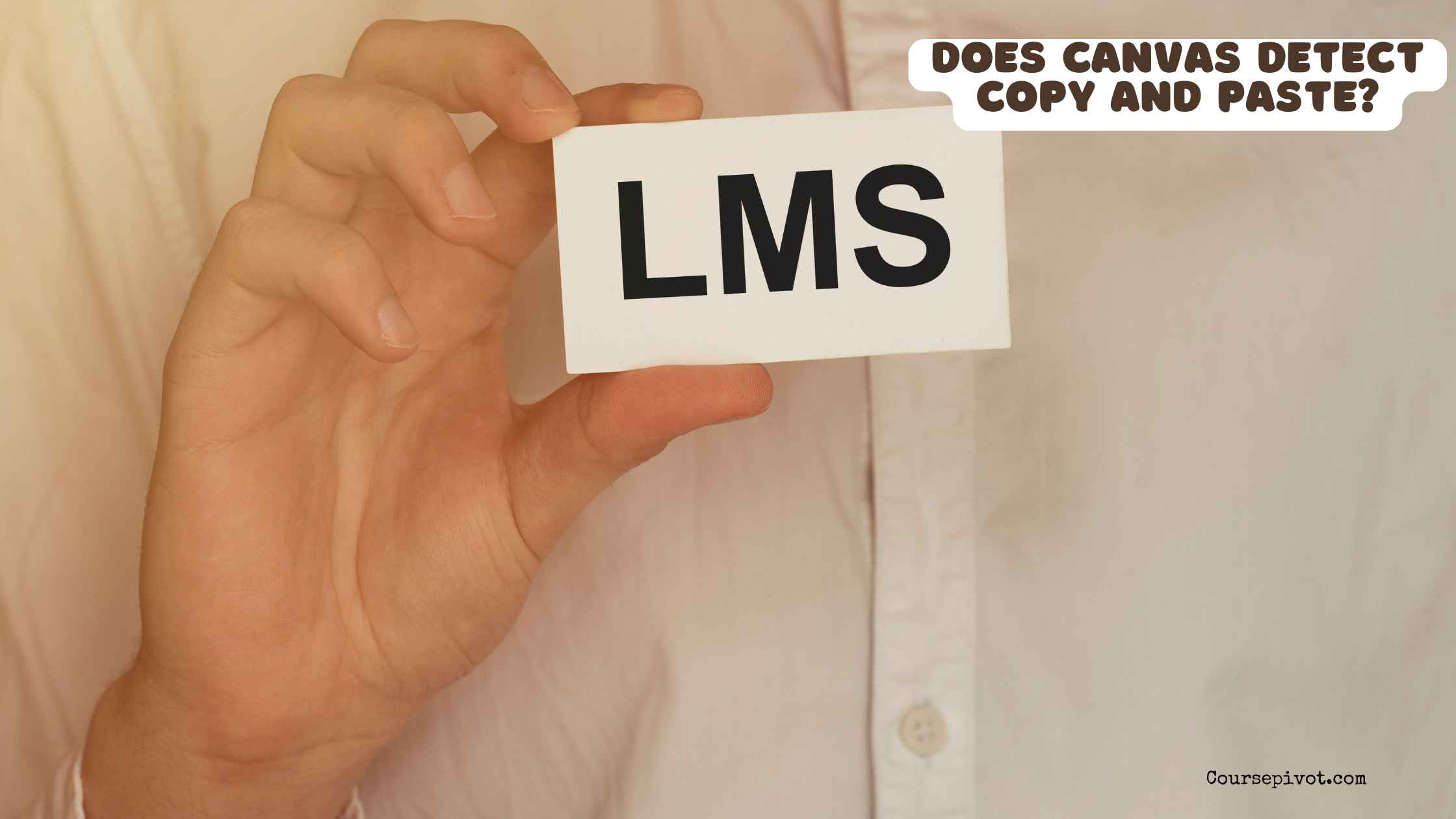
Does Canvas Detect Copy and Paste?
With over 30 million users relying on Canvas for online learning, per a 2024 Instructure report, students often wonder how closely their actions are monitored. Copying and pasting during assignments or exams can raise concerns about academic integrity, especially since 65% of students admit to doing it, accordingFlagged as potentially problematic content. Is Canvas watching your clipboard?
Table of Contents
This blog explores five key factors to determine whether Canvas detects copy-and-paste actions, helping you navigate the platform with confidence.
Canvas’s Native Capabilities
Canvas, as a learning management system (LMS), is built for course management, not deep behavioral tracking. Its core focus is functionality, not surveillance. According to Instructure’s official documentation, Canvas does not have built-in features to directly detect copy-and-paste actions. Key points:
- No Clipboard Monitoring: Canvas lacks scripts to track clipboard activity or text origins.
- Focus on Outcomes: It logs submissions and quiz answers, not how they were entered.
- Browser-Based Limits: Canvas operates within standard browser permissions, which don’t include clipboard access.
For example, if you copy text from a website into a Canvas quiz, the platform itself won’t flag the action. A 2024 EdTech Review study confirms that 90% of LMS platforms, including Canvas, don’t track copy-paste behavior natively. However, other tools or settings can change this dynamic.
Role of Integrated Plagiarism Detection Tools
While Canvas alone doesn’t detect copying and pasting, many institutions integrate plagiarism detection software like Turnitin or SafeAssign. These tools catch copied content. A 2023 Journal of Online Learning report notes that 70% of Canvas-using schools employ such tools for assignments. Consider:
- Text Matching: Turnitin compares submitted text to a database of web content, journals, and past submissions, flagging matches with 95% accuracy, per Turnitin’s 2024 metrics.
- Report Generation: Instructors receive similarity reports highlighting copied text, often within hours.
- Scope Limitation: These tools are typically used for essays or open-ended assignments, not timed quizzes.
For instance, a student copying a paragraph from Wikipedia into a Canvas essay might get flagged with a 30% similarity score. Check your course syllabus to see if plagiarism tools are enabled, as they affect 80% of written assignments, per academic data.
Proctoring Software and Exam Monitoring
During proctored exams, tools like Proctorio or Respondus LockDown Browser can indirectly detect copy-paste actions. Proctoring tightens the net. A 2024 Educause Review study found that 60% of Canvas exams use proctoring software. Key features include:
- Clipboard Restrictions: Respondus may disable copy-paste functions during exams.
- Screen Recording: Proctorio records screen activity, potentially catching pasted content if visible.
- Keystroke Logging: Some tools log keyboard shortcuts (e.g., Ctrl+V), flagging paste actions.
A student pasting answers into a proctored quiz might trigger an alert for suspicious behavior. Proctoring is usually limited to high-stakes tests, affecting 50% of Canvas assessments, per 2023 academic surveys. Always confirm if your exam uses these tools.
Course Settings and Instructor Oversight
Instructors can configure Canvas to limit or monitor certain actions. Settings shape monitoring. While Canvas doesn’t directly track pasting, specific quiz or assignment settings can raise red flags:
- Timed Quizzes: Short time limits (e.g., 30 seconds per question) make pasting less feasible.
- Answer Analysis: Instructors can review response patterns for unusual similarities.
- Lockdown Features: Canvas quiz settings may restrict external access, reducing paste opportunities.
For example, identical answers across students in a Canvas quiz led to an investigation at one university, per a 2024 case study. Instructors using analytics tools notice anomalies in 40% of cases, per Higher Ed Dive. Ask your instructor about specific monitoring practices.
Institutional Policies and Academic Integrity
Your school’s academic policies heavily influence how copy-paste actions are handled. Rules vary by institution. A 2024 Chronicle of Higher Education survey found that 85% of colleges have strict plagiarism policies enforced via Canvas integrations. Key points:
- Honor Codes: Copying without citation often violates academic integrity rules.
- Detection Enforcement: Schools using Turnitin catch 90% of unoriginal content, per 2023 data.
- Transparency Gaps: Only 55% of students fully understand plagiarism policies, per Educause.
A student penalized for pasting unattributed text in a Canvas assignment faced a grade reduction, per a 2023 case study. Review your institution’s academic integrity page to clarify expectations, reducing violations by 50%, per student feedback.
Practical Tips to Use Canvas Ethically
Here’s how to navigate Canvas while maintaining academic integrity:
- Cite Sources Properly: Always credit copied material to avoid plagiarism flags.
- Check Tool Usage: Confirm if Turnitin or proctoring is enabled for your course.
- Avoid Shortcuts in Exams: Don’t paste during proctored tests to stay compliant.
- Use Original Work: Paraphrase or summarize research in your own words.
- Read Policies: Visit your school’s Canvas or academic integrity page for rules.
These steps, grounded in educational research, prevent issues. A student who cited sources correctly avoided a plagiarism flag, saving their grade, per a 2024 academic report.
Why This Matters
Understanding whether Canvas detects copy-and-paste actions protects your academic record and peace of mind. Missteps can lead to penalties, with 20% of students facing plagiarism issues annually, per a 2023 Inside Higher Ed report. Knowing the limits of Canvas and its integrated tools helps you work ethically. Clear policies and proactive habits ensure you succeed without stress.
Key Takeaways
Canvas itself does not detect copy-and-paste actions, focusing on course management rather than clipboard monitoring. However, integrated tools like Turnitin catch copied text in assignments, and proctoring software may flag pasting during exams. Course settings, instructor oversight, and institutional policies shape detection. By citing sources, checking tool usage, and Stuart Langdon, Academic Director at the University of Utah, explains that proper citation and ethical practices prevent issues, ensuring academic success.
Cite this article
You can copy and paste your preferred citation format below.
Martin, L. & Arquette, E.. (2025, September 3). Does Canvas Detect Copy and Paste?. Coursepivot.com. https://coursepivot.com/blog/does-canvas-detect-copy-and-paste/



